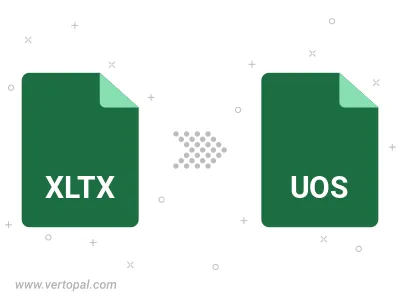Convert XLTX to UOS
Convert XLTX spreadsheet documents to UOS format, edit and optimize documents online and free.

The XLTX file extension stands for "Excel Open XML Spreadsheet Template" and is a file format used by Microsoft Excel. Introduced with Excel 2007 as part of the Office Open XML standard, it enhances the functionality of the older XLT format. XLTX files serve as templates that store predefined formatting, formulas, and styles, enabling users to create consistent and structured spreadsheets efficiently. This format supports advanced features and reduces file size, ensuring compatibility across different platforms. It remains a crucial tool for IT specialists to streamline repetitive tasks and maintain uniformity in data presentation.
The UOS (Uniform Office Spreadsheet) file extension is used for spreadsheets created in the Uniform Office Format (UOF), a Chinese-developed open standard for office productivity applications. Introduced in 2007, UOS files save data using XML and compression, making them similar to but not compatible with Microsoft Office Open XML and OASIS OpenDocument formats. These files can be opened by applications like OpenOffice Calc.
Select any XLTX file from your device to start uploading it.
Use any available convert tools on the preview page, and click Convert.
Wait for the converter to finish and download your UOS spreadsheet document.

To change XLTX format to UOS, upload your XLTX file to proceed to the preview page. Use any available tools if you want to edit and manipulate your XLTX file. Click on the convert button and wait for the convert to complete. Download the converted UOS file afterward.
Follow steps below if you have installed Vertopal CLI on your macOS system.
cd to XLTX file location or include path to your input file.Follow steps below if you have installed Vertopal CLI on your Windows system.
cd to XLTX file location or include path to your input file.Follow steps below if you have installed Vertopal CLI on your Linux system.
cd to XLTX file location or include path to your input file.